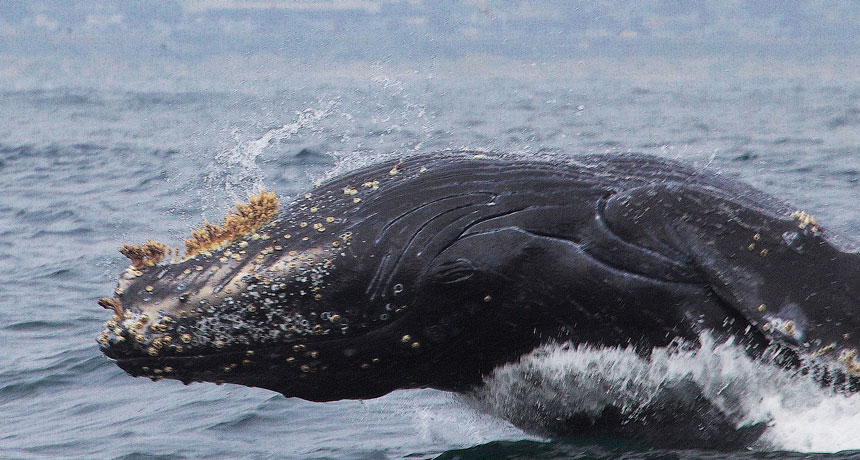Barnacles track whale migration

DENVER — Barnacles can tell a whale of a tale. Chemical clues inside barnacles that hitched rides on baleen whales millions of years ago could divulge ancient whale migration routes, new research suggests.
Modern baleen whales migrate thousands of kilometers annually between breeding and feeding grounds, but almost nothing is known about how these epic journeys have changed over time. Scientists can glean where an aquatic animal has lived based on its teeth. The mix of oxygen isotopes embedded inside newly formed tooth material depends on the region and local temperature, with more oxygen-18 used near the poles than near the equator. That oxygen provides a timeline of the animal’s travels. Baleen whales don’t have teeth, though. So paleobiologists Larry Taylor and Seth Finnegan, both of the University of California, Berkeley, looked at something else growing on whales: barnacles. Like teeth, barnacle shells take in oxygen as they grow.
Patterns of oxygen isotopes in layers of barnacle shells collected from modern beached whales matched known whale migration routes, Taylor said September 25 at the Geological Society of America’s annual meeting. Roughly 2-million-year-old barnacle fossils have analogous oxygen isotope changes, preliminary results suggest. Converting those changes into migration maps, however, will require reconstructing how oxygen isotopes were distributed long ago, Taylor said.